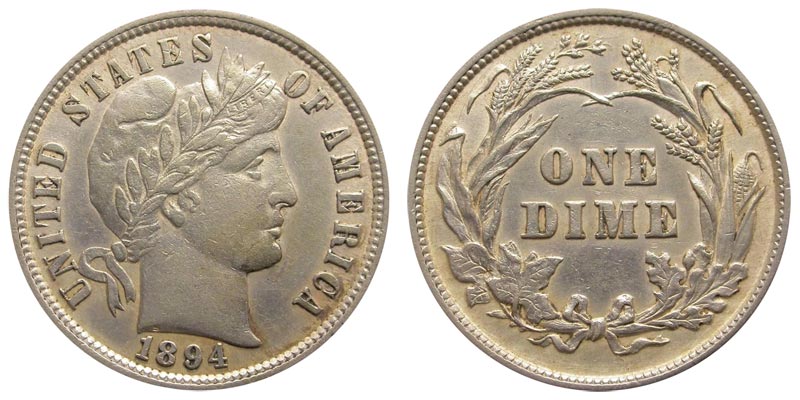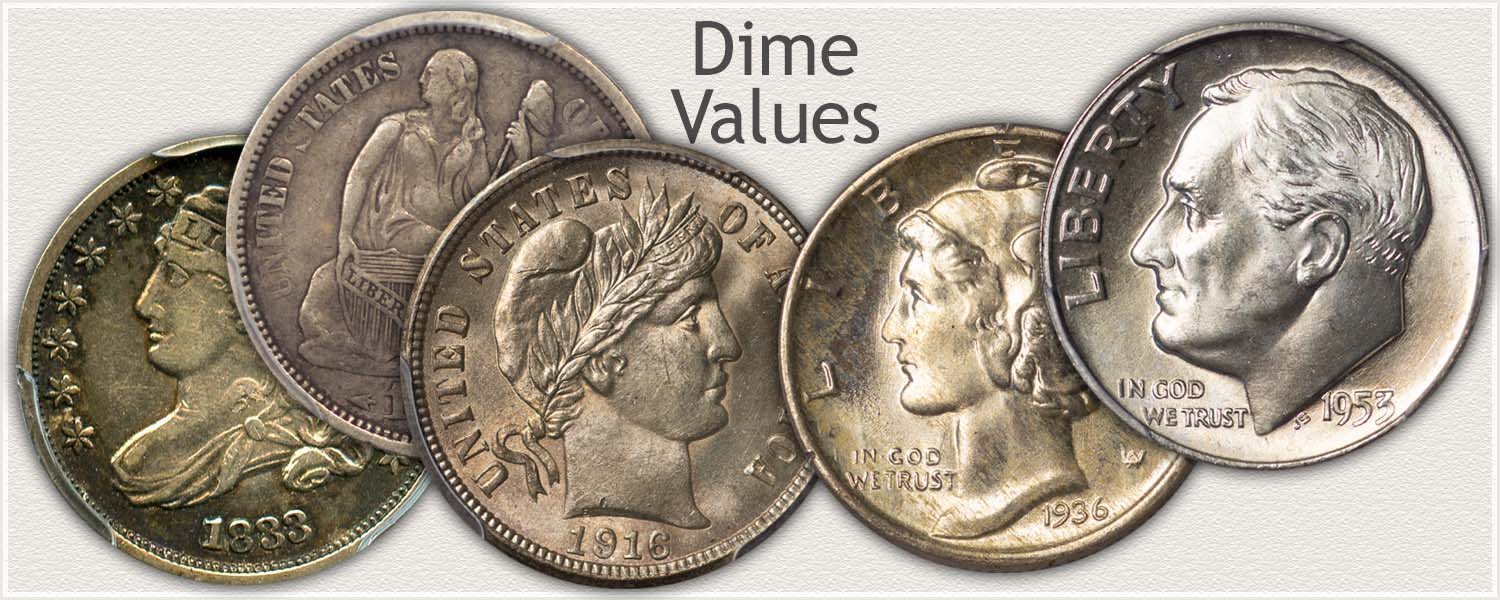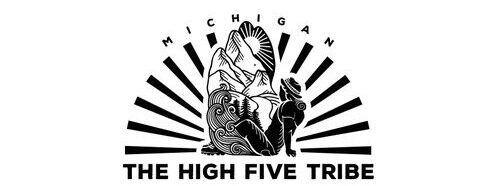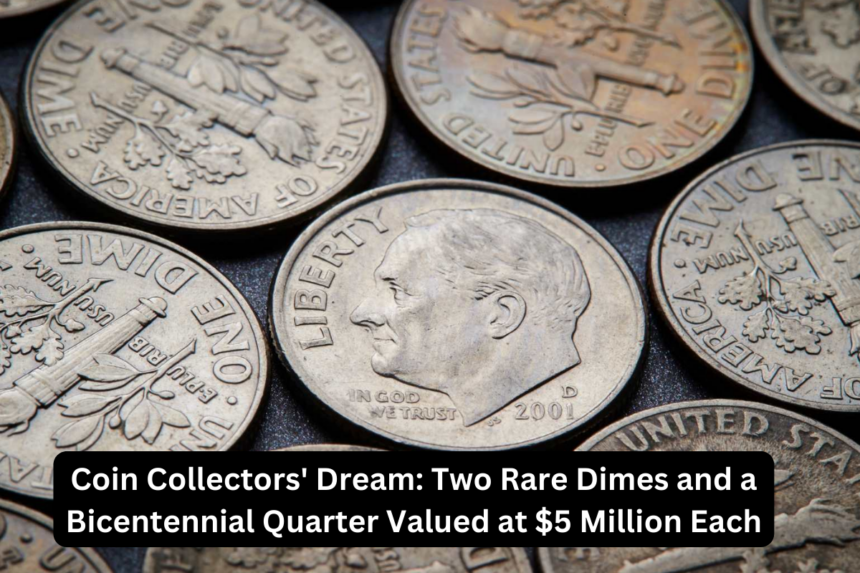Introduction:
The world of coin collecting is filled with stories of hidden treasures waiting to be discovered. Among the coins in everyday circulation, there are some that hold extraordinary value. Currently, two rare dimes and a Bicentennial Quarter are estimated to be worth $5 million each. Here’s a detailed look at these coins and how you might find one in your pocket change.
The Valuable Dimes
These two dimes have gained legendary status among collectors due to their rarity and historical significance. Each has unique characteristics that set it apart from the rest:
1. 1894-S Barber Dime

Background: Designed by Charles E. Barber, the Barber Dime was minted from 1892 to 1916. The 1894-S is one of the rarest and most famous U.S. coins.
Mintage: Only 24 were minted, and today, only nine are known to exist.
Features: It features the head of Liberty on the obverse and a wreath on the reverse.
Value Factors: The extremely low mintage and the fact that very few have survived in excellent condition make this coin incredibly valuable. One of these dimes sold for nearly $2 million at auction.
2. 1916-D Mercury Dime

Background: The Mercury Dime, officially known as the Winged Liberty Head dime, was designed by Adolph A. Weinman and minted from 1916 to 1945. The 1916-D is one of the most coveted coins in the series.
Mintage: Only 264,000 of these dimes were minted, making it extremely rare.
Features: The coin features the profile of Liberty with a winged cap on the obverse and a fasces and olive branch on the reverse, symbolizing strength and peace.
Value Factors: High demand among collectors, coupled with its low mintage, makes this coin exceptionally valuable, especially in higher grades of preservation.
The Remarkable Bicentennial Quarter
The Bicentennial Quarter, minted in 1976 to celebrate America’s 200th anniversary, features a colonial drummer boy on the reverse side. While most Bicentennial Quarters are worth only their face value, a select few with rare minting errors or in pristine condition can be worth an astonishing $5 million.
Factors Contributing to Their Value
- Rarity: The scarcity of these coins is the primary factor driving their value. Limited mintage, unique minting errors, or historical significance can make a coin extremely rare.
- Condition: Coins in excellent, uncirculated condition are worth significantly more than those that have been circulated and worn.
- Historical Significance: Coins with historical importance or unique features that tell a story are more desirable to collectors.

How to Identify These Rare Coins
- Date and Mintmark: Check the date and mintmark to verify if the coin matches one of the rare varieties.
- Condition: Examine the coin for signs of wear and tear. Pristine, uncirculated coins are more valuable.
- Errors: Look for any unusual features or minting errors, such as double strikes or missing elements.
Tips for Finding Rare Coins in Circulation
- Inspect Your Change: Regularly check the coins you receive in transactions for rare dates and mintmarks.
- Bank Rolls: Ask for rolls of dimes and quarters from banks, as these can sometimes contain rare coins.
- Coin Shows and Auctions: Attend coin shows and auctions to learn more about rare coins and possibly acquire them.

The Excitement of the Hunt
The search for these two rare dimes and the elusive $5 million Bicentennial Quarter is a captivating endeavor. Each coin you inspect carries the potential for discovery, and the knowledge gained along the way enriches the experience. Whether you find a $5 million treasure or simply enjoy the thrill of the hunt, this quest offers a unique blend of history, artistry, and the chance for immense reward.
Conclusion:
Embarking on the search for these incredibly valuable coins is more than just a pursuit of wealth; it’s a journey through history and a dive into the fascinating world of coin collecting. By understanding what makes these coins special, learning to identify them, and diligently searching your change, you might uncover a hidden fortune. Happy hunting!
FAQ’s:
Q1: What makes the 1894-S Barber Dime so valuable?
A: The 1894-S Barber Dime is highly valuable due to its extremely low mintage of only 24 coins, with only nine known to exist today. Its rarity and the fact that very few have survived in excellent condition contribute to its immense value, with one selling for nearly $2 million at auction.
Q2: Why is the 1916-D Mercury Dime considered one of the most coveted coins?
A: The 1916-D Mercury Dime is highly coveted because of its low mintage of 264,000 coins and its high demand among collectors. Its unique design by Adolph A. Weinman and the low number of coins produced make it exceptionally rare and valuable, especially in higher grades of preservation.
Q3: What is special about the Bicentennial Quarter?
A: The Bicentennial Quarter, minted in 1976 to celebrate America’s 200th anniversary, features a colonial drummer boy on the reverse side. While most Bicentennial Quarters are worth only their face value, a select few with rare minting errors or in pristine, uncirculated condition can be worth up to $5 million.
Q4: How can I identify these rare coins?
A: To identify these rare coins, check the date and mintmark to see if they match one of the rare varieties. Examine the coin’s condition for signs of wear and look for any unusual features or minting errors, such as double strikes or missing elements.
Q5: Where can I find these rare dimes and Bicentennial Quarter?
A: These rare coins can sometimes be found in everyday change, rolls of coins from banks, and coin collections. Regularly inspecting your change and seeking out coin rolls from banks can increase your chances of finding one.






